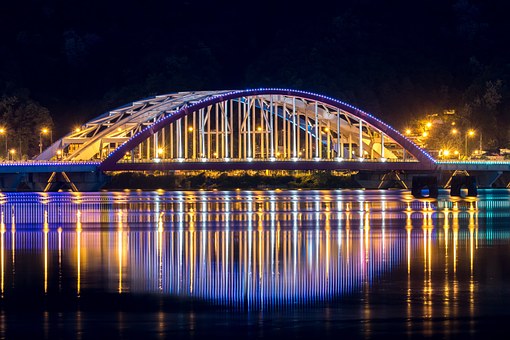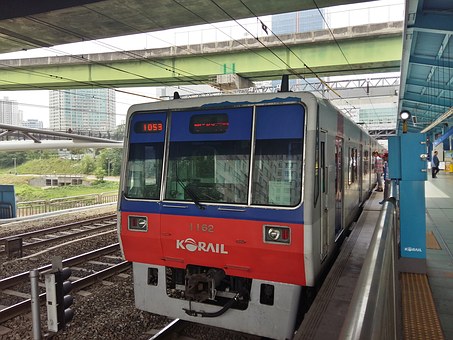Traveling To Korea In The Summer? Learn About Sambok And Beat The Korean Summer Heat!

Korea boasts a number of festive holidays
Korea boasts a number of festive holidays. Leading the list is Seollal, or New Year, when people enjoy a bowl of tteokguk (rice cake soup) or play traditional games with their families. On Chuseok, the entire family gathers to enjoy the bounties of the autumn harvest. On Dano, people wear colorful hanboks, ride on swings, and wash their hair in iris-essence water. And there is Sambok, when people eat especially nutritious meals and cool off in a mountain brook during the hottest period of summer.If you have ever been to Korea or have an interest in the country, you may have heard a little about the holidays of Seollal, Chuseok, and Dano. How about Sambok? The word Sambok may sound unfamiliar to you, but if you want to beat the heat of summer in Korea, then you might want to learn more about it. Here is what Korean people enjoy doing during Sambok.
What is Sambok?
In the past when most Koreans depended on farming for their livelihood, all family members worked in the fields from spring to fall. But when the scalding heat of summer made field work nearly impossible, everyone would take a short respite from the sizzling sun. Part of this summertime ritual was eating a carefully prepared, nutritious meal meant to build stamina and cool the body: a wise and easy way to recover from fatigue and gear up for the fall harvest.

Sambok refers to the three hottest days of summer, which mark the peak of the growing season. After these days have passed, farmers look forward to the ripening of the rice. According to the lunar calendar, the sambok period extends over a month and is marked by the three days of chobok (beginning), jungbok (middle), and malbok (last). There is a 10-day interval between chobok and jungbok, and a 20-day interval between jungbok and malbok. This year, chobok is July 20, jungbok is July 30, and malbok is August 9 after the monsoon season (June 10, 20, and July 10 respectively by the lunar calendar). And since Sambok is counted according to the lunar calendar, the days are different every year.
What Do People Do on Sambok Days?
In the past, Sambok was a holiday for farmers worn out by farming chores. During the dynastic period, the royal court distributed ice from the palace icehouse to its high-ranking officials. In those days, however, ice was a rarity for the common people. So, when the heat of summer made it impossible to work the land, people did chores instead, or took a few days off to go to a cooler place.
Usually, people took refuge in a nearby mountain valley or at the seacoast. Such trips were mostly common among housewives. They would flee from labor and spend a leisurely cool summer vacation, enjoying a footbath in a cold mountain brook or a sand bath on the beach. This was also a time for them to visit their parents and family members.
Nowadays, there are no special sambok traditions, but people still continue the custom of eating nutritious and rejuvenating foods, which is why you'll find a long line of customers waiting to be seated at samgyetang or other sambok-special restaurants.
Korean's Favorite Sambok Meals!
Koreans are most interested in foods that help restore stamina weakened by the scorching heat, and the most popular are samgyetang (chicken ginseng soup) andjangeogui (grilled eel). According to Eastern medicine, blood concentrates near the skin in hot weather in order to cool the body, and this may lead to bad blood circulation in the stomach and muscles. For this reason, it is not uncommon to lose one's appetite or feel exhausted in summer.
On those days, people will want to eat foods that warm the body. For example, chicken, the main ingredient in samgyetang, warms the body, and ginseng too promotes heat in the body. One might ask: why eat hot foods when the weather is already so hot? From ancient times, the custom was based on the Oriental medicinal theory that even though there is heat in the body, the internal organs are relatively cold. It was believed that by warming up the inner body, not only would one overcome summer heat, it would also prevent illness and fatigue. And because poor nutrition reduced energy, which could ultimately lead to a bad harvest, people usually prepared nutritious and energizing meals on sambok days. It addition to samgyetang, people also eat jangeogui (broiled eel), patjuk (red bean porridge), or summer fruits like melon.
Samgyetang - The Most Popular Sambok Dish
Samgyetang, the most popular Korean dish for sambok days, is prepared with a tender young chicken (one small chicken each for individual servings), ginseng, garlic, jujube dates, and glutinous rice.
In addition to samgyetang, you can also try the chogyetang (cold noodles with chicken) or yukgaejang (spicy beef soup), which are made from chicken. It is said that a hot meal that induces perspiration has more health benefits than a cold meal in summer.
Patjuk Drives Away Spirits, So Why Not Heat?
Patjuk, red bean gruel, is eaten not only on sambok days, but also on Dongji (winter solstice). Ancient records show that because the color red was avoided by evil spirits, people threw red beans at the front gate of their home or ate red bean porridge to drive away evil spirits. For this reason, it is customary for Koreans to make patjuk in hopes of bringing peace and health to the family. In some regions especially, people have long believed that eating patjuk on sambok days helps drive away heat and illness, so it has become customary to make patjuk. A sweet tasting legume, red beans are rich in protein, fat, fiber, and vitamin B1, and help relieve swelling.
Chueotang and Jangeogui Make for Younger-Looking Skin
Rich in vitamin A and E, jangeo, or eel, stimulates blood circulation and helps prevent ageing and wrinkles. Freshwater eel or mudfish has 200 times the vitamin A in beef. Eel is known to be effective for people suffering from rheumatism, pneumonia, or osteoporosis. In Korea, grilled eel is especially popular among men, as it is believed to be an aphrodisiac thanks to the eel's rich content in zinc. Other natural foods rich in zinc are oysters and abalone, and it is said that the legendary libertine Casanova never forgot to eat 50 oysters a day. Moreover, because of its high retinol content that helps prevent wrinkles and ageing, eel is also widely enjoyed by women.
by: Korea Tourism Koreas Top 10 Tourist Destination An article discussing executive offices in the State of Washington and how it can do wonders for your company Life is a Beach When You Know Where to Live Relax and Enjoy with an Ultrasonic Massager Ecological Diversity Of The Australian Star Wars' Princess Leia Halloween Costume Picks Tourist Attractions In Afghanistan Choosing the Best Wizard of Oz Halloween Costumes Halloween Props - Which Ones Should You Buy Alice in Wonderland Costumes for this Year's Halloween Check Out Las Vegas Hotels For A Fun Filled Holiday. Bhutan Travel Tips How To Wear Striped Ties